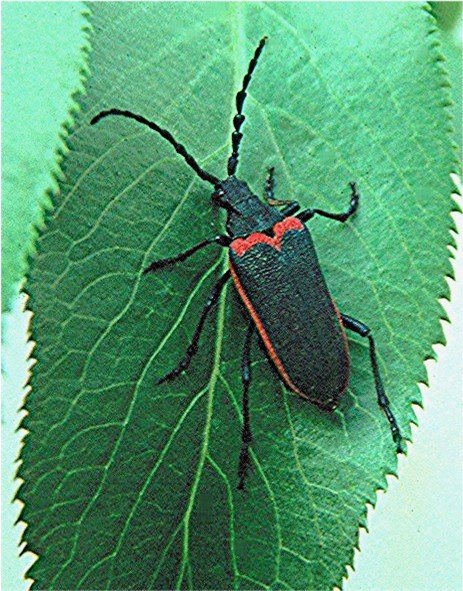|
Leptura Sequoiae
''Leptura sequoiae'' is a species of beetle in the family Cerambycidae The longhorn beetles (Cerambycidae), also known as long-horned or longicorns, are a large family of beetles, with over 35,000 species described. Most species are characterized by extremely long antennae, which are often as long as or longer than .... It was described by Hopping in 1934.Bezark, Larry GA Photographic Catalog of the Cerambycidae of the World. Retrieved on 22 May 2012. References Lepturinae Beetles described in 1934 {{Lepturinae-stub ... [...More Info...] [...Related Items...] OR: [Wikipedia] [Google] [Baidu] |
Ralph Hopping
Ralph H. Hopping (April 8, 1868, New York City – October 29, 1941) was an American-born Canadian entomologist who specialized in Coleoptera (beetles and weevils). Biography Hopping was born in New York City. From an early age he collected and studied insects, especially Coleoptera. In 1891, he relocated with his father, George W. Hopping, to California. In 1905, Ralph entered the United States Forest Service. In 1912, he held the post of Forest Entomologist, and was based in San Francisco. In 1919, he was offered, and accepted, the post of Entomologist-in-Charge at the Vernon Laboratory in British Columbia, Canada. He remained at Vernon until he retired in 1939, with the title of Senior Agricultural Scientist. He was a member of several learned societies, including the California Academy of Sciences (from 1913), the Pacific Coast Entomological Society, and the Entomological Society of British Columbia. He collected, and described, numerous species of beetle. He directed h ... [...More Info...] [...Related Items...] OR: [Wikipedia] [Google] [Baidu] |
Beetle
Beetles are insects that form the order Coleoptera (), in the superorder Endopterygota. Their front pair of wings are hardened into wing-cases, elytra, distinguishing them from most other insects. The Coleoptera, with about 400,000 described species, is the largest of all orders, constituting almost 40% of described insects and 25% of all known animal life-forms; new species are discovered frequently, with estimates suggesting that there are between 0.9 and 2.1 million total species. Found in almost every habitat except the sea and the polar regions, they interact with their ecosystems in several ways: beetles often feed on plants and fungi, break down animal and plant debris, and eat other invertebrates. Some species are serious agricultural pests, such as the Colorado potato beetle, while others such as Coccinellidae (ladybirds or ladybugs) eat aphids, scale insects, thrips, and other plant-sucking insects that damage crops. Beetles typically have a particularly hard e ... [...More Info...] [...Related Items...] OR: [Wikipedia] [Google] [Baidu] |
Cerambycidae
The longhorn beetles (Cerambycidae), also known as long-horned or longicorns, are a large family of beetles, with over 35,000 species described. Most species are characterized by extremely long antennae, which are often as long as or longer than the beetle's body. In various members of the family, however, the antennae are quite short (e.g., '' Neandra brunnea'') and such species can be difficult to distinguish from related beetle families such as the Chrysomelidae. The scientific name of this beetle family goes back to a figure from Greek mythology: after an argument with nymphs, the shepherd Cerambus was transformed into a large beetle with horns. Description Other than the typical long antennal length, the most consistently distinctive feature of the family is that the antennal sockets are located on low tubercles on the face; other beetles with long antennae lack these tubercles, and cerambycids with short antennae still possess them. They otherwise vary greatly in size, shap ... [...More Info...] [...Related Items...] OR: [Wikipedia] [Google] [Baidu] |
Lepturinae
Lepturinae, the lepturine beetles, is a subfamily of the longhorn beetle family (Cerambycidae), containing about 150 genera worldwide. This lineage is most diverse in the Northern Hemisphere. Until recently the subfamily Necydalinae was included within the lepturines, but this has been recently recognized as a separate subfamily. Nine tribes are usually recognized today, with a tenth, Caraphiini, created in 2016. A few genera are of uncertain placement within the subfamily. Usually among the smaller members of their family, these beetles are of a slender shape – particularly the thorax is markedly less wide than the wings, while the elytra tips are often pointed. They differ from most other longhorn beetles in that the antennae are not directly adjacent to the compound eyes. Hence, the latter are generally oval in outline, rather than having an indentation where the antennae originate, or even being divided by them. In addition, sexual dichromatism is not infrequently see ... [...More Info...] [...Related Items...] OR: [Wikipedia] [Google] [Baidu] |


